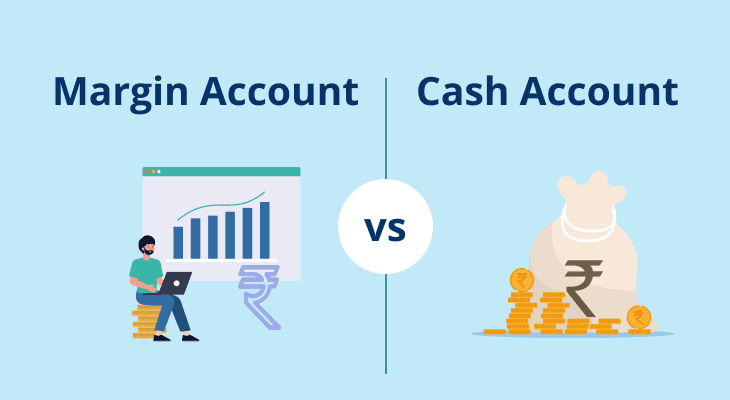
Income Tax Implication on Demat Account & Transactions
In recent years, the usage of demat accounts has become increasingly popular among investors in India. Demat accounts provide a convenient and secure way to hold and transact in securities electronically. You too may be using a demat account to generate returns. Therefore, it is essential for account holders, like you, to understand the implications of income tax on demat transactions and the income generated from other investments.
This article aims to provide an overview of the tax implications on demat accounts in India, including the tax on demat account transactions, income tax on demat accounts, filing income tax returns, tax planning strategies, and frequently asked questions.
Tax on Demat Account Transactions
Demat account transactions can attract various taxes, including:
Capital Gains Tax
When you sell securities held in a demat account and realise a profit, it is considered a capital gain and is taxed based on the holding period of the securities. The capital gains tax appears in two forms:
Long-term Capital Gains Tax (LTCG)
LTCG refers to the profit earned from the sale of securities that have been held for a period of more than 12 months. The tax treatment for LTCG is different from that of STCG.
LTCG exceeding Rs. 1 lakh is subject to tax at a concessional rate of 10% without indexation benefit. However, gains up to Rs. 1 lakh in a financial year are exempt from tax. It's important to note that this revised tax regime is applicable only for listed equity shares and equity-oriented mutual funds.Short-term Capital Gains Tax (STCG)
STCG refers to the profit earned from the sale of securities that have been held for a period of less than 12 months. The tax treatment for STCG is different from that of LTCG.
STCG is added to the individual's total income and taxed at the applicable slab rates. The tax rates vary based on the income brackets, ranging from 5% to 30% (plus applicable surcharge and cess). It's important to note that individuals with taxable income below the basic exemption limit are not liable to pay tax on STCG. However, if STT is applicable, then the rate of tax is 15% for STCG.
Securities Transaction Tax (STT)
STT is a demat account income tax levied on the purchase and sale of securities in the Indian stock market. It is applicable to equity shares, equity derivatives, and units of equity-oriented mutual funds. STT rates vary depending on the type of transaction and are paid at the time of trade execution.
It's important to note that STT is collected by the stock exchanges and paid by the brokers on behalf of their clients. The tax is automatically deducted and reflected in the contract notes provided by the broker.Goods And Services Tax (GST)
GST is applicable to specific charges levied by depositories, registrars, and brokers for the services provided in relation to demat accounts. GST rates vary based on the nature of services and are added to the transaction charges. The rate of GST varies depending on the type of service provided, and it can range from 18% to 28% as per the applicable tax slabs.
It's important for demat account holders to review their contract notes and statements provided by brokers to understand the GST component and ensure compliance with the tax regulations.
Tax Planning and Strategies for Demat Account Holders
You can employ several tax planning strategies to optimise your liabilities arising out of the demat account income tax. Here are a few examples:
Holding Period For Capital Gains Tax
By holding securities for more than 12 months, you can qualify for the concessional tax rate on long-term capital gains. This strategy can help in reducing the overall tax burden.
Offsetting Capital Gains And Losses
You can offset capital gains from the sale of securities with capital losses incurred during the same financial year. This strategy allows for the reduction of taxable gains, potentially resulting in lower tax liabilities.
Long-Term Capital Loss (LTCL)
LTCL refers to the loss incurred from the sale of securities that have been held for a period exceeding 12 months. It occurs when the selling price of the security is lower than its cost of acquisition. LTCL can arise from investments in equity shares, equity-oriented mutual funds, or other capital assets held for a long duration.
LTCL can be set off against any LTCG made during the same financial year. By setting off LTCL against LTCG, you can reduce your taxable gains and, consequently, your tax liability. However, LTCL cannot be set off against any other type of income.
If an investor has an unused LTCL after setting it off against LTCG, it can be carried forward to subsequent years. The unused LTCL can be carried forward for up to eight financial years immediately following the year in which the loss was incurred. It can be utilised to set off against future LTCG in those years, thereby reducing the tax liability in the future.Short-Term Capital Loss (LTCL)
STCL refers to the loss incurred from the sale of securities that have been held for a period of 12 months or less. It occurs when the selling price of the security is lower than its cost of acquisition.
STCL can be offset against any Short-Term Capital Gains (STCG) made during the same financial year. Similar to LTCL, STCL can reduce your tax liability. However, STCL cannot be set off against Long-Term Capital Gains (LTCG) or any other income.
Just like LTCL, STCL can also be carried forward for up to eight financial years immediately following the year in which the loss was incurred.How To Save Tax Using a Demat Account?
A Demat account is more than just a place to store shares, it can also help you invest in tax-saving instruments and manage them easily in one place. By choosing the right investments through your Demat account, you can claim deductions under various sections of the Income Tax Act while also building wealth.
Here are some tax-saving investment options you can consider through a Demat account:
Equity Linked Savings Scheme (ELSS) Mutual Funds:
ELSS funds qualify for a deduction of up to ₹1.5 lakh under Section 80C. They have a short, 3-year, lock-in period and potential for higher returns compared to traditional tax-saving instruments.
Unit Linked Insurance Plans (ULIPs):
Some ULIPs can be linked to your Demat account for tracking. Premiums paid are eligible for deduction under Section 80C, and the maturity proceeds may be tax-free under Section 10(10D) if conditions are met. The lock-in here is usually 5 years.
Tax-Free Bonds:
Investing in government-backed tax-free bonds means the interest you earn is completely exempt from income tax, making them ideal for long-term, low-risk investing. The lock-in period varies from 5-10 years.
National Pension System (NPS):
While not directly stored in your Demat, NPS investments can be tracked alongside other holdings. Contributions qualify for deductions under Section 80CCD(1B) up to ₹ 50,000 in addition to Section 80C benefits. You can withdraw up to 60% of your NPS corpus, tax free, after reaching the age of 60.
Sovereign Gold Bonds (SGBs):
These can be held in your Demat account, and the interest earned is taxable, but capital gains on redemption after maturity are tax-free.
Gift Tax on Demat Account
When you transfer shares or securities from one Demat account to another as a gift, the transaction can attract gift tax under the Income Tax Act. The rules depend on the relationship between the giver and the recipient, as well as the value of the gift.
If the securities are gifted to a relative (as defined under the Income Tax Act), the transfer is fully exempt from tax, regardless of the value. Relatives include spouse, parents, siblings, and certain in-laws.
However, if the recipient is a non-relative and the total fair market value of gifts received in a financial year exceeds ₹ 50,000, the entire value of the gifted shares will be treated as income under “Income from Other Sources” and taxed as per the recipient’s slab rate. Up to ₹ 50,000 is tax free.
In addition, when the recipient sells the gifted securities, capital gains tax will apply. For this, the original purchase price and holding period of the giver are considered to calculate the gain or loss.
Keeping proper documentation such as a gift deed and proof of transfer in the Demat account is important for tax compliance and to avoid disputes during assessment.
In Conclusion
Understanding the applicable tax on a demat account and its implications is crucial for investors in India. By being well-informed about the tax rules and regulations, you can ensure compliance with the tax laws and optimise your tax liabilities. It's also essential for you to accurately calculate and report your capital gains, taking into account the holding period and the applicable tax treatment (STCG or LTCG) while filing your income tax returns.
Do note, tax laws and regulations may change over time, and it is advisable for you to stay updated with the latest tax provisions and seek guidance from tax professionals when necessary.
An Income Tax Calculator helps you estimate how much tax you need to pay based on your income, deductions, and exemptions. Use our Income Tax Calculator to understand your tax liability better and plan smarter to save more.
FAQ
What are the advantages of including Demat accounts in income tax?
A Demat account makes it easy to track and report your securities transactions for tax purposes. It also helps in claiming exemptions on capital gains, planning losses for tax benefits, and complying with record-keeping requirements.
Is the gift of shares taxable for the sender or receiver?
If the gift is to a relative (as per Income Tax Act definition), it is tax-free for both sender and receiver. If it is to a non-relative and the value exceeds ₹ 50,000 in a financial year, the receiver will be taxed on the entire value.
Are capital gains from shares in a Demat account taxed differently?
Yes. Gains from shares held over 12 months are considered long-term and taxed at 12.5% (above ₹ 1.25 lakh), while gains from shares held for 12 months or less are short-term and taxed at 20%.
Can I avoid tax by selling shares before one year?
Selling before one year results in short-term capital gains, which are taxed at 20%. To benefit from the lower long-term capital gains tax rate, it’s better to hold shares for at least 12 months.
Do I need to declare my Demat account in my income tax return?
While you don’t have to list your Demat account itself, you must declare all income from it, such as capital gains, dividends, or other taxable receipts, in your income tax return.
What is the tax on demat transactions?
Demat account transactions attract taxes such as capital gains tax, dividend income tax, securities transaction tax (STT), and goods and services tax (GST) on transaction charges.
How is income from a demat account taxed?
Income from a demat account, such as capital gains and dividend income, is subject to income tax. The tax rates depend on factors such as the holding period, type of income, and applicable slab rates.
Which ITR form should demat account holders use?
The ITR form for demat account holders to use while filing their income tax returns is ITR-2 or ITR-3, depending on their income sources and the nature of transactions.
Do I need to report all demat transactions in my income tax return?
Demat account holders are required to report their capital gains and dividend income from demat transactions accurately in their income tax returns, providing the necessary details for tax computation.


